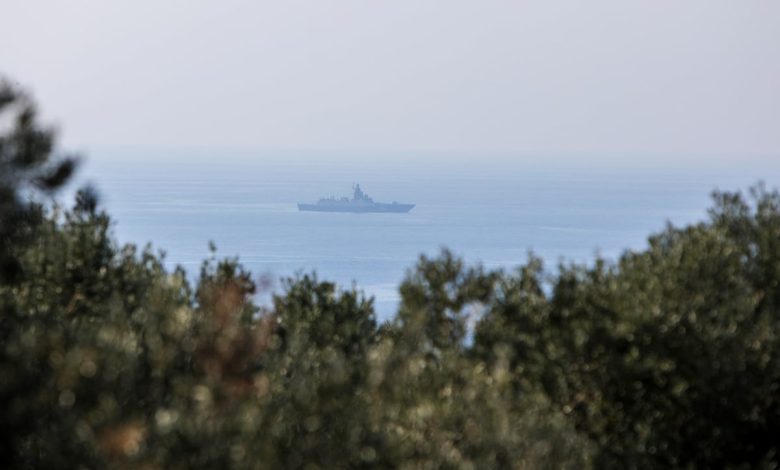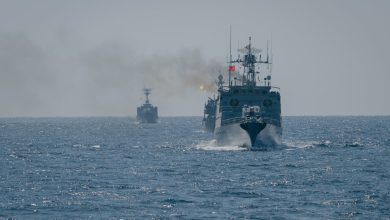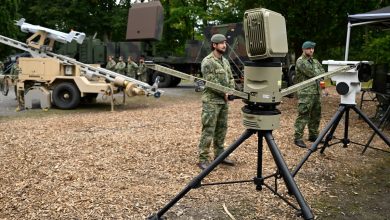NATO sees Russian naval presence wane in the Mediterranean

MILAN — NATO officials have been tracking a decrease in Russia’s naval presence in the Mediterranean, which officials have attributed to readiness problems and the Baltic Sea and High North regions demanding greater attention in Moscow’s eyes.
Gone are the days when Russia positioned one of its largest naval task forces in the Mediterranean, following escalating tensions in 2018 in Syria, deploying at least two submarines and ten surface ships.
According to a NATO official who spoke on the condition of anonymity, these numbers have dropped in recent months, with the Russian Navy averaging only a few maritime assets in the region.
“It is our assessment that the Russian Navy, which is already resource-constraint regarding where to place its assets, is experiencing force-generation challenges and dilemmas currently affecting their posture in the Mediterranean sea,” the representative told Defense News.
RELATED
The official noted two key factors that have exacerbated these difficulties: the loss of Russia’s strategic port in Tartus, Syria, and NATO’s bolstered presence in the Baltic and High North regions.
In January, the new Syrian government terminated a long-standing agreement that enabled Russian presence into the country. Established in 1971 under a Soviet-Syrian lease agreement, the Tartus port served for decades as Russia’s main refuel naval facility in the Mediterranean.
Being deprived of that naval base has affected the Russian Navy’s operational capability as it no longer has access to a close-by replenishment and repair center.
“With the loss of that port, now, for example, if they bring a Kilo-class submarine in the area, they have to bring it all the way down there from one of their northern or baltic ports – being able to sustain operations is definitely more challenging,” the NATO official said.
At the end of September, the Russian Kilo-class submarine Novorossiysk was spotted surfacing off the Strait of Gibraltar due to several reported technical issues related to a leak. The submarine subsequently appeared to be making its way to the Baltic Sea for repairs the following week.
The city of Novorossiysk is currently the closest major Russian Black Sea port to Mediterranean waters – but to access it, forces must transit long-distances through Turkish-controlled straits.
The Kremlin also possesses the Baltiysk port, located within the Russian exclave of Kaliningrad Oblast, situated on the Baltic Sea coast, but reaching it from the Mediterranean would require even more travel and crossings.
A Baltic shift
With the decline of its regional influence and the launch of NATO’s large-scale deployment to the Baltic Sea, Moscow has shifted a good chunk of its focus to this location.
The military alliance kicked off its Baltic Sentry mission in January to provide enhanced protection of critical underwater infrastructure and bolster its sea surveillance with the support of frigates, maritime patrol aircraft, drones, and national surveillance assets.
The NATO official said that Russia has tried to match this increased presence by sending more resources to protect its own interests and shipping in these waters.
While the Russian Navy does not provide exact numbers of how many ships make up its Baltic Fleet, an open-source report published this year by the International Institute for Strategic Studies assessed that it includes roughly 69 vessels, including older, smaller boats.
However, some naval experts state that in the Baltic Sea, “the Russian Baltic Fleet is severely outnumbered compared to the available NATO naval forces of Baltic Sea nations,” writes Frederik Van Lokeren, a former officer of the Belgian Navy, in the online news service Naval News.
He goes on to argue that adding unmanned surface vessels to the fleet would be a force booster for Russian forces – but NATO seems to have taken an early lead on this matter.
“I do think allies have a technological advantage over Russia when it comes to readied and effective naval drones, but we can’t let off the gas and they [allied nations] must maintain a sense of urgency as we seek to maintain and increase our edge with innovation,” the NATO official said.
Elisabeth Gosselin-Malo is a Europe correspondent for Defense News. She covers a wide range of topics related to military procurement and international security, and specializes in reporting on the aviation sector. She is based in Milan, Italy.







